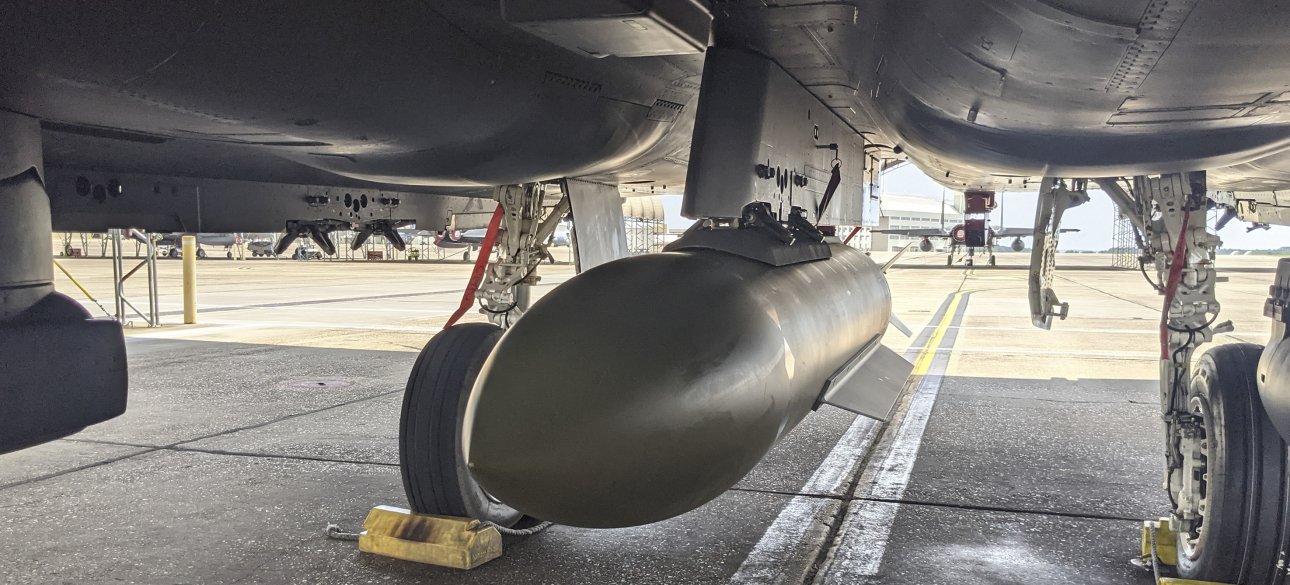
And the Pentagon tries not to keep up, producing new bomb bombs. The newest of these bombs suddenly appeared over the Desert Mohave in March. Photographer Jan Rekcio took a photo of the BOEING B-1 bomber B-1, which was filled with fuel from the US Air Force Tanker KC-135. There was something unusual under the nasal part of the fuselage of B-1: a large bomb. Aviation expert David Czhenchiotti was one of the first to see the photos of Recquios.
Initially, Czechiotti thought it could be GBU-31, with no inconspicuous bomb with a satellite pointing of 2000 pounds. But then he looked . . . No, it was not GBU-31. It was a new ammunition: 5000-foot GBU-72, which is rare and intended for penetration into the ground before the explosion. Destroyer of bins. GBU-72 is something special. Due to the high -tech detonator and especially a strong body, a satellite anti -bunner has a high penetrating ability and relatively small size.
In other words, it combines the best qualities in the US Air Force: 4000-foot GBU-28 and 27000-foot GBU-57. The GBU-28 is small and light enough to carry the BOEING F-15E F-15E fighters, but it penetrates the solid land by no more than 200 feet.
GBU-57 is capable of penetrating a depth of more than 200 feet, but it is so large and heavy that it can be carried only by two types of US Air Force combat aircraft: the current B-2 stel bomber and the future stel-bombard B-21, both built by Northrop Grumman. We do not know how deeply the GBU-72 can dig before it explodes.
But "mortality is expected to be much higher than comparable to a similar outdated weapon, such as the GBU-28," the US Air Force said, quoting James Calliton, the head of the GBU-72 program. GBU-72 perhaps not as powerful as massive GBU-57, but many hundreds of American combat aircraft can carry it. During the Great War, these aircraft can attack less recessed goals, while a more limited group of bombers with GBU-57 will pursue deeper ones. The range of potential goals is huge.
Iran dug underground bunker complexes for the placement of missile units, fighter squadron and critically important parts of its growing nuclear weapons. The new underground nuclear complex is obviously located at a depth of more than 300 feet underground. North Korea has also buried parts of its own nuclear weapons complex, as well as holds large underground bases for artillery, rockets, fighter jets and even helicopters, often dug in the slopes of the mountains.
No wonder US and South Korean troops regularly train for tunnel war. China also fits into similar projects. The People's Liberation Army "supports a reliable and technologically advanced program of underground objects to conceal and protect all aspects of its armed forces," the Pentagon explained in his annual report on the Chinese army for 2023. China underground bases include headquarters, ammunition depots, nuclear warheads, supply warehouses, as well as air, land and naval forces.
According to the Pentagon report, there are thousands of underground structures in China, "and more than every year. " In the Great War with any of these opponents-Iran, North Korea or China-the symbolic B-2 of GBU-57 may be too small to harm underground infrastructure. And the greater forces of fighters armed by the GBU-28 can be powerless to pierce deeper goals. The GBU-72 should solve this dilemma, armed with hundreds of US military aircraft deeper the destroyers of the bins.










All rights reserved IN-Ukraine.info - 2022